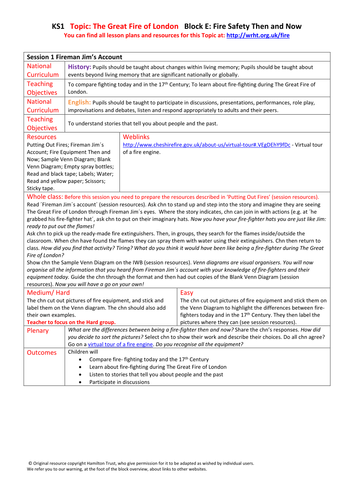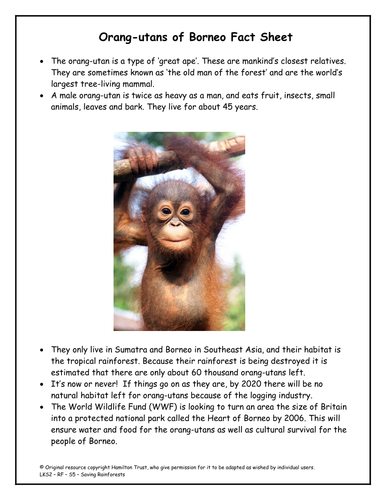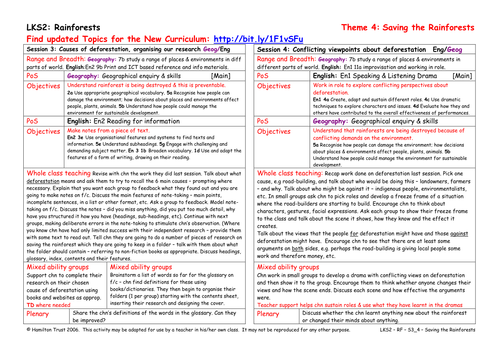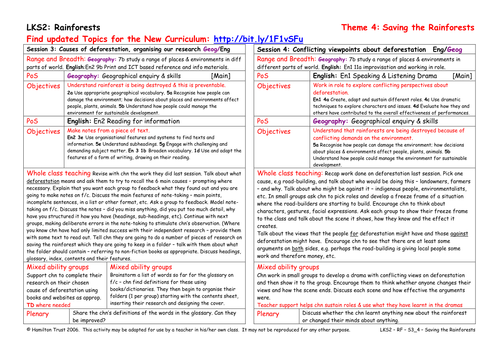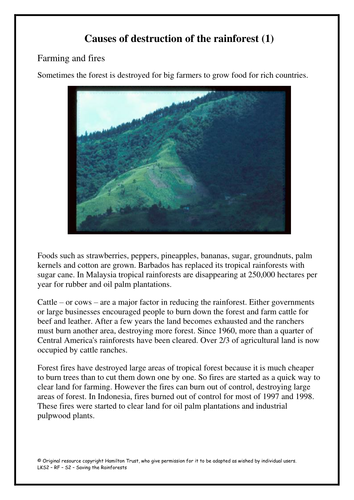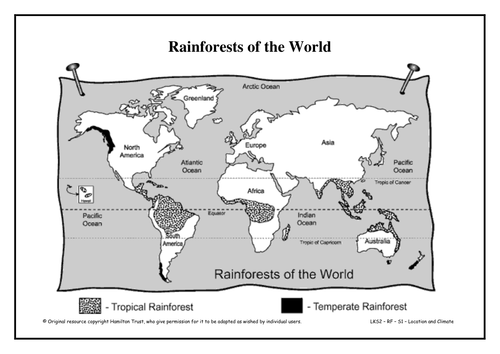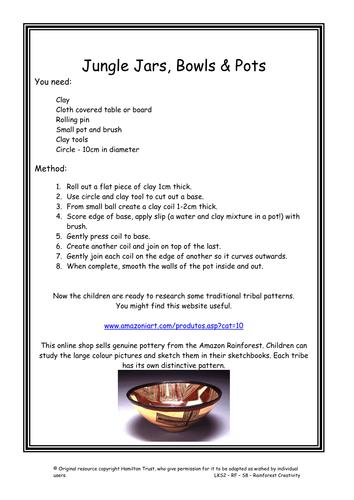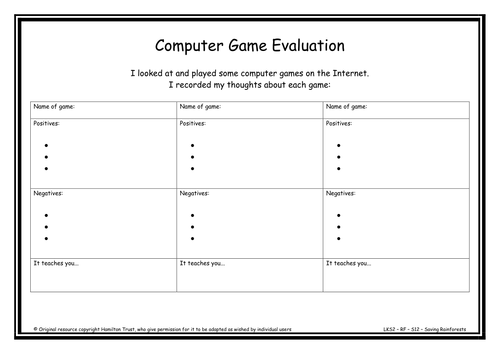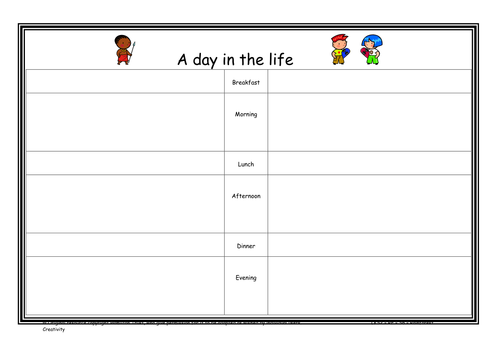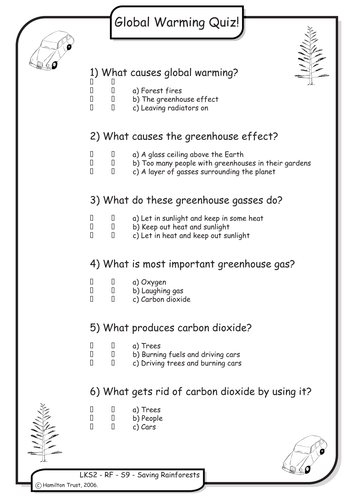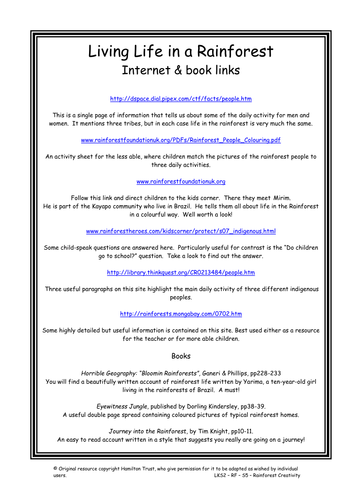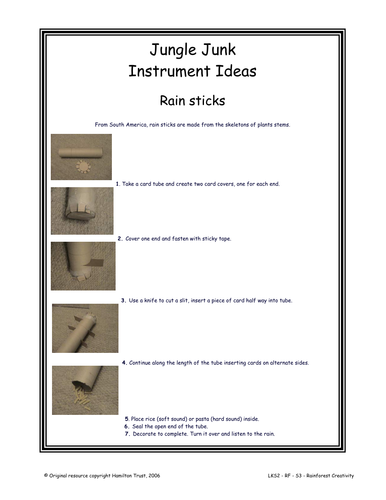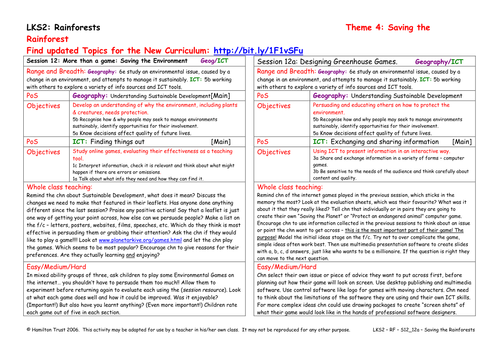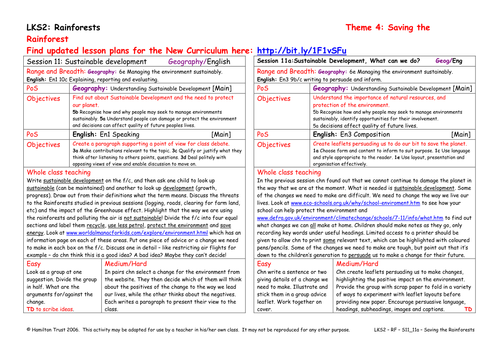
3k+Uploads
10009k+Views
11617k+Downloads
Geography

Dinosaurs and Fossils - Ice Age Fossils - Upper Key Stage 2
Become an enthusiastic, expert palaeontologist! Study a distinctive Victorian silhouette showing palaeontologist William Buckland, his family and his fossils. Learn about his discoveries and links to Mary Anning. Research the Ice Ages and Ice Age animals in Britain. Exhibit work and invite visitors to share in your learning.
Includes:
- Topic Overview
- Block Overview
- Lesson 01: The Buckland Silhouette
Learn about William Buckland the famous palaeontologist, his family life and his fossil hunting.
- Lesson 02: The first dinosaur
Find out more about Buckland, his discovery of the first named dinosaur, the Megalosaurus, his other discoveries and his links to Mary Anning.
- Lesson 03: The Ice Age
Make a timeline showing the Ice Ages and the Ice Age animals in Britain.
- Lesson 04: Making fossils
Make replica dinosaur and Ice Age fossils and experimental silhouettes.
- Lesson 05: Experimenting with silhouettes
Try out three different ways of making silhouettes: casting shadows, using sun-printing and using a shadow theatre.
- Lesson 06: Making a silhouette
Choose one method of making a silhouette, inspired by the Buckland picture, and record it using a camera or as a piece of art.
- Lesson 07: Sharing the silhouettes
Label their silhouettes and plan an informative talk; then decide on a design for an exhibition and invite people to enjoy their work.
Find more lesson plans and resources at www. hamilton-trust.org.uk.

Dinosaurs and Fossils - Mary Anning - Upper Key Stage 2
Be a palaeontologist! Excavate a fossil block and research the three main epochs of fossils. Find out how fossils are made and make your own. Tour your school sharing your knowledge with other children.
Includes:
- Topic Overview
- Block Overview
- Lesson 01: Fossils in the UK
Re-cap how fossils are made, learn about the fossil-hunting areas of the UK and create a map.
- Lesson 02: History of science
Learn about the 18th Century science, society and the status of women.
- Lesson 03: Mary Anning
Learn about Mary Anning, her life as a fossil hunter and her achievements.
- Lesson 04: Improvise a play
Improvise a play to tell other children about Mary Anning, drawing on all your previous research.
Find more lesson plans and resources at www. hamilton-trust.org.uk.

The Great Fire of London - Fire Safety Then and Now - Key Stage 1
Be gripped by this significant historic event from the 17th Century!
Learn about modern and 17th Century fire-fighting. Understand how the Great Fire of London started, spread and what the results were. Finally, think about your own fire safety, before creating a poster and a fire safety plan.
Includes:
- Topic Overview
- Block Overview
- Lesson 01: Fireman Jim's account
Compare the fire-fighting methods of today with the methods of the 17th Century.
- Lesson 02: Fire Safety Then and Now
Find out about fire safety, role-playing an emergency call and creating a poster describing safety tips.
- Lesson 03: Hear Ye, Hear Ye
Learn about communicating in the 17th Century and make up your own scroll message to alert others to a fire.
- Lesson 04: Fire Safety Plans
Learn more about the Great Fire and why it spread so quickly; ask questions to a local fire officer and create a simple plan of your house showing fire safety routes.
Find more lesson plans and resources at www. hamilton-trust.org.uk.

Rocks - Rocks and Fossils - Year 3
Create an amazing rock and fossil museum to which you can invite other classes, parents and family, or even members of your local community like the Natural History or Geology Society! Each session you will build up your knowledge to become expert museum curators and make exhibits, quizzes and activities for your exciting pop-up museum.
Includes 6 session plans & resources:
01 - Rock stars!
02 - Rock detectives
03 - Rock quest!
04 - Fantastic fossils
05 - Soil detectives
06 - Make ready for amazing rock and fossil museum!
Hamilton’s science scheme provides children with a broad but comprehensive experience of primary science that systematically covers all of the National Curriculum for England objectives. Each year group is split into 6 blocks of 6 sessions, each of which can be completed within a half-term. We present them in a recommended teaching order, but you may adapt this to fit your requirements. Working scientifically, investigations and meaningful outcomes are fully incorporated in each block.
Find out more: www.hamilton-trust.org.uk/scites

The Union Flag!
Waving the flag! Using the Olympic timeline the children identify the last four countries and cities to host the Summer Olympic Games. The flag for Great Britain is pulled apart to see which countries make up the Union Jack.

Endangered orang-utans (1)
Using the internet and fact sheets children find out more about the Orang-utans and why they have become endangered. What is being done to protect them and their habitats? What else can be done?

Conflicting viewpoints about deforestation
There are two sides to every argument! In this session children take on roles on opposing sides of the deforestation argument. Children create simple freeze frames and sketches to put points across.

Causes of deforestation, organising our research
In this session children find out how to create key word notes and organise their information in folders with contents pages. Children continue to use non fiction book features and the internet to locate information effectively.

Causes of deforestation research
Children use internet search engines in small groups to find out more about a specific threat to the worlds rainforests. Children collect information in the form of notes and present their concerns and solutions to the class.

Rainforests: Looking into deforestation
In the next ten years at the current rate half of the world’s rainforests will disappear. Children look in brief at the causes of deforestation before creating on maps a horrific view of the future.

Salsa Beat! Dance To The Music!
In this session the children get to the rhythm of Salsa! They find out about the history of the dance, before listening to some examples and getting to grips with the instruments used to create it.

Headdress to Impress!
The Kayapo Indians who live in the Rainforests of Brazil are famous for their ceremonial headdresses. In this session children use the internet to study their designs before creating their own to wear in the classroom.

Jungle Jars, Bowls and Pots
In this session children take a look at typical examples of pots created by peoples of the Rainforests. They study the differences in pattern and decoration before creating their own pot from clay and decorating it.

More than a game… Saving The Environment
Who says learning can’t be fun! Children play and interact with a variety of computer games in the internet, all with a serious message. Children evaluate which are the most fun to play but also best at getting that message across.

A day in the life! Rainforest Diaries
Your lunch is what you find to eat in the rainforest, not the contents of mum’s packed lunch! But there are other important differences too!
Children use their notes from the previous session to compare their lives to those of children in the Jungle.

Effect of Global Warming
In this session children take a closer look at the causes of global warming and look at the long term effects. How can they do their part to reduce the greenhouse effect? They put it to the test in the Great Greenhouse Effect Quiz!

Living Life In The Rainforest
The Rainforests are home to some 1.5 million people worldwide. But what is life for them really like? Chn take a close look in this session as they delve deeper into the forests and find out about life in the Jungle using books and ICT.

Jungle Junk
Listen to the Rhythm of the Rainforest in this session! Children start by studying the Baka people who live in the African Rainforests, looking in detail at their instruments. Children then create simple instruments of their own using junk modelling techniques.

Designing Greenhouse Games
In this session children apply what they found out in the previous session about internet games to create their own Saving the Planet computer game. Whose will be most enjoyable? Which game will encourage us to do things differently?

Sustainable development - What can we do?
All talk no action...! Not in this session. Children use the internet to find out what else we can do before creating leaflets to persuade other children and adults to make the change!



